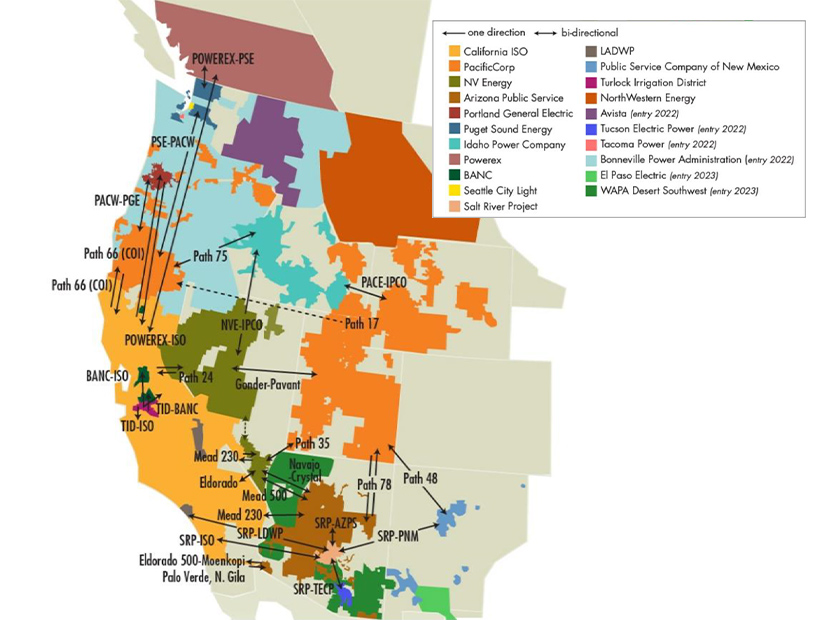Exercising their new joint authority, the CAISO Board of Governors and the Western Energy Imbalance Market Governing Body last week adopted a new set of revisions to the resource sufficiency evaluation for WEIM participants.
The RSE test is meant to ensure that each WEIM participant enters a trading hour with enough capacity and ramping capability to supply its own needs and to prevent participants from “leaning” on the market to meet internal demand.
CAISO adopted RSE changes last year in its Market Enhancements for Summer 2021 initiative, which was intended to ensure resource adequacy after the prior summer’s rolling blackouts. Some WEIM participants, however, criticized several provisions affecting the ISO’s interstate market.
CAISO agreed to revisit the matter in a stakeholder initiative that culminated with the changes adopted Wednesday.
The enhancements, scheduled to take effect this summer, include provisions to measure a participant’s available supply and ramping capability more accurately. They also modify import-counting rules and allow demand response programs to be considered in the RSE.
“The newly adopted enhancements will increase transparency by providing the WEIM participants with more of the data used in the resource sufficiency evaluation, which will help each balancing authority understand how their schedules and bids performed and improve their ability to be successful in future evaluations,” CAISO said in a news release.
Uncertainty
Last year, participants raised objections to an “uncertainty” adder meant to account for the unpredictability of weather-dependent resources such as solar and wind generation, transmission outages and other variables. Some contended it skewed results and led to test failures, including by CAISO last summer.
CAISO suspended the uncertainty component effective Feb. 12.
“Concerns were raised regarding the existing methodology for calculating uncertainty,” CAISO said in a Feb. 8 update. “These concerns remain unresolved.”
Therefore, “the ISO is moving under its existing authority to suspend this provision from the capacity test,” it said. “The ISO will look to reconsider net-load uncertainty within the capacity test in a future phase of the [RSE] enhancements initiative.”
CAISO plans to work with stakeholders to assess additional changes, including the consequences if a WEIM member fails to pass the resource sufficiency evaluation — another contentious topic raised last year.
Cooperation
CAISO and WEIM approved a new power-sharing agreement last August and held their first meeting under the new relationship in December to discuss the RSE enhancements. (See CAISO Reevaluating WEIM Resource Sufficiency Test.)
Last week’s RSE decision was among their first joint actions under the new rules.
“I want to recognize the thoughtful collaboration and engagement with our market partners and stakeholders to improve and evolve the performance of the WEIM,” CAISO CEO Elliot Mainzer said in the news release.
“We also recognize that there is more work to be done on this topic to meet the goals of reliability, accountability, transparency and equity that must underlie a truly effective resource sufficiency evaluation and well-functioning WEIM.”


